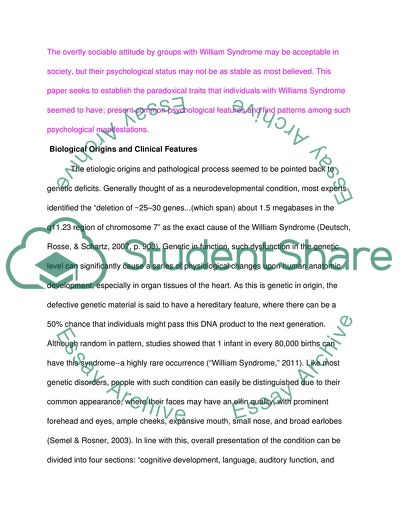Cite this document
(Etiology and Manifestations of the Williams Syndrome Research Paper - 1, n.d.)
Etiology and Manifestations of the Williams Syndrome Research Paper - 1. Retrieved from https://studentshare.org/psychology/1751420-williams-syndrome-in-psychology
Etiology and Manifestations of the Williams Syndrome Research Paper - 1. Retrieved from https://studentshare.org/psychology/1751420-williams-syndrome-in-psychology
(Etiology and Manifestations of the Williams Syndrome Research Paper - 1)
Etiology and Manifestations of the Williams Syndrome Research Paper - 1. https://studentshare.org/psychology/1751420-williams-syndrome-in-psychology.
Etiology and Manifestations of the Williams Syndrome Research Paper - 1. https://studentshare.org/psychology/1751420-williams-syndrome-in-psychology.
“Etiology and Manifestations of the Williams Syndrome Research Paper - 1”, n.d. https://studentshare.org/psychology/1751420-williams-syndrome-in-psychology.


